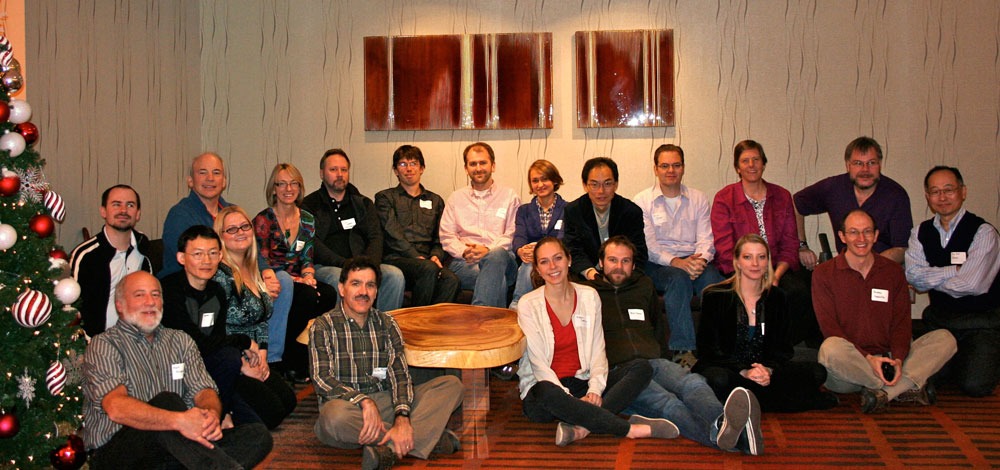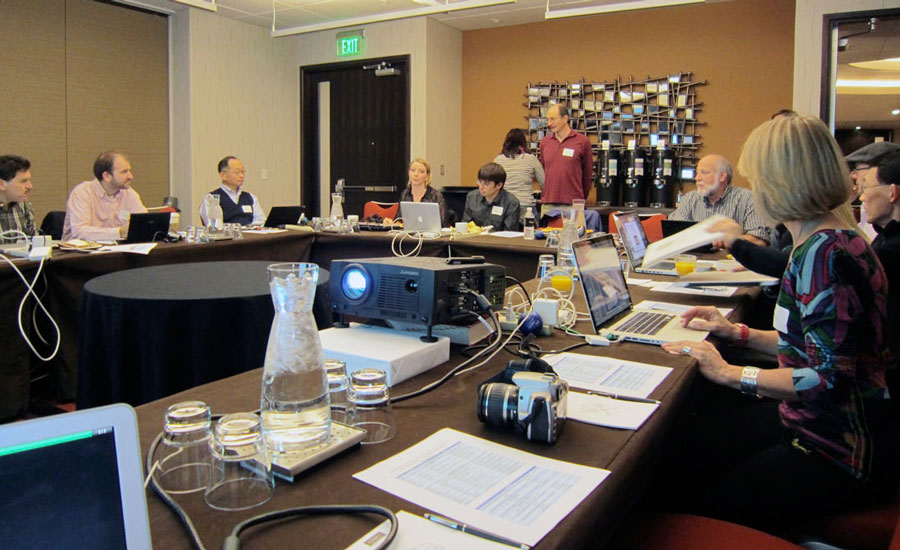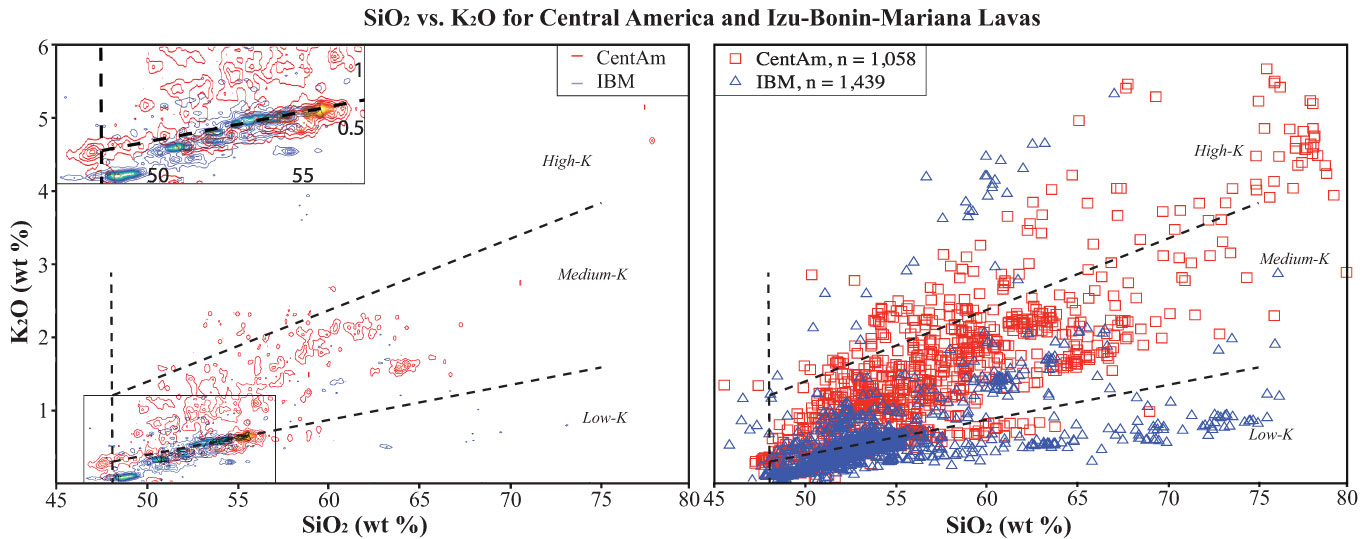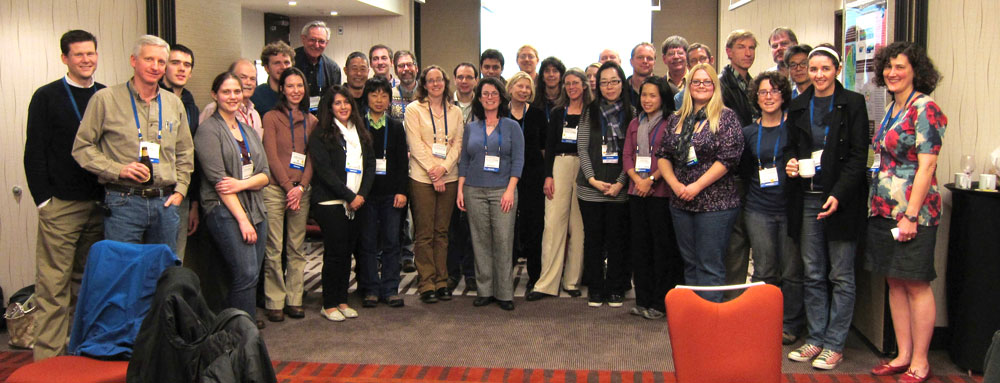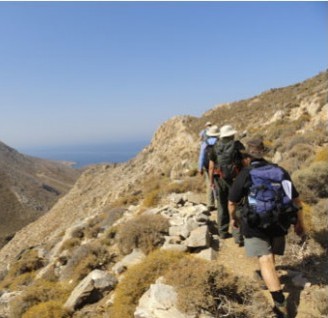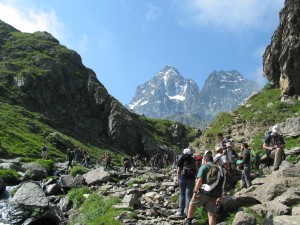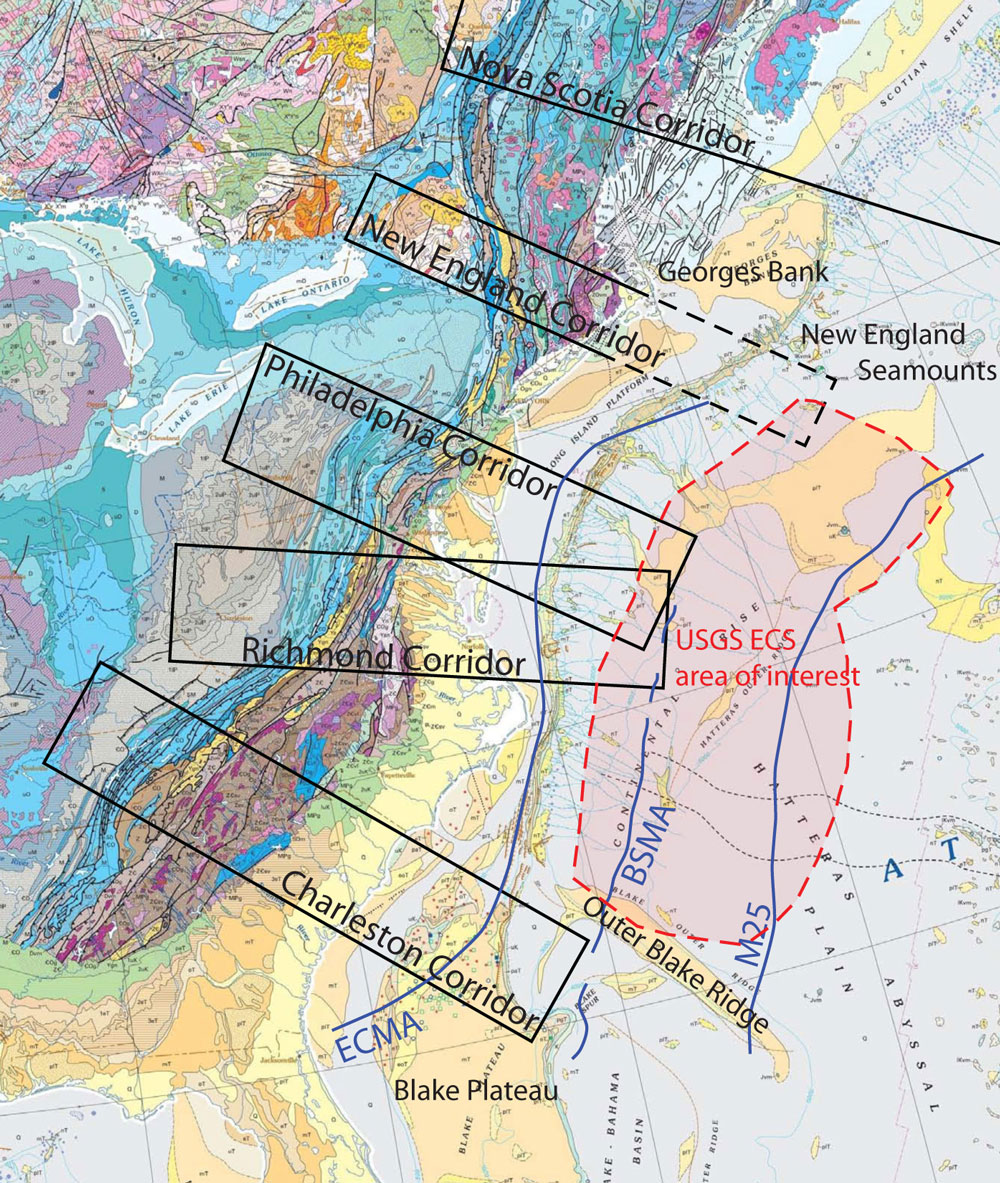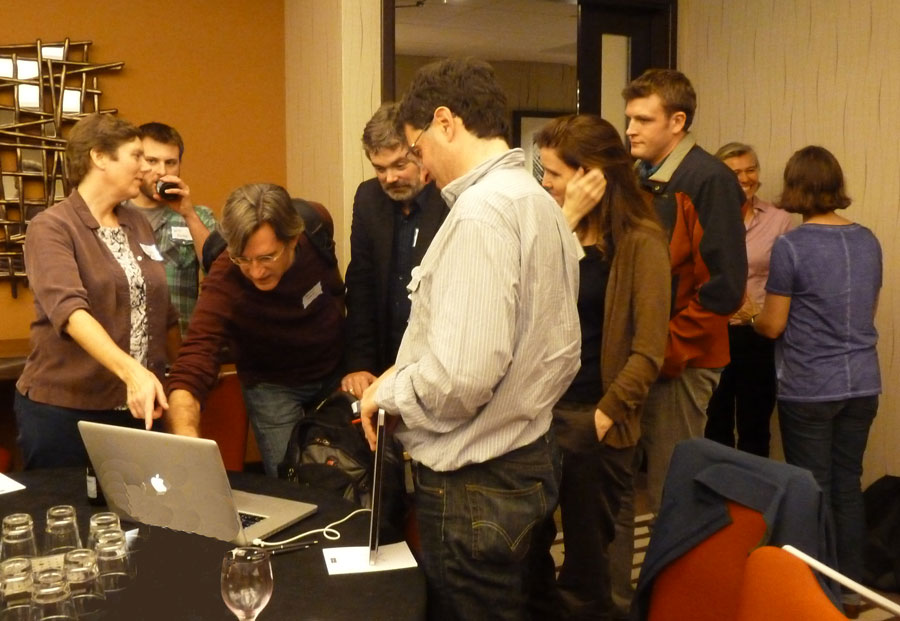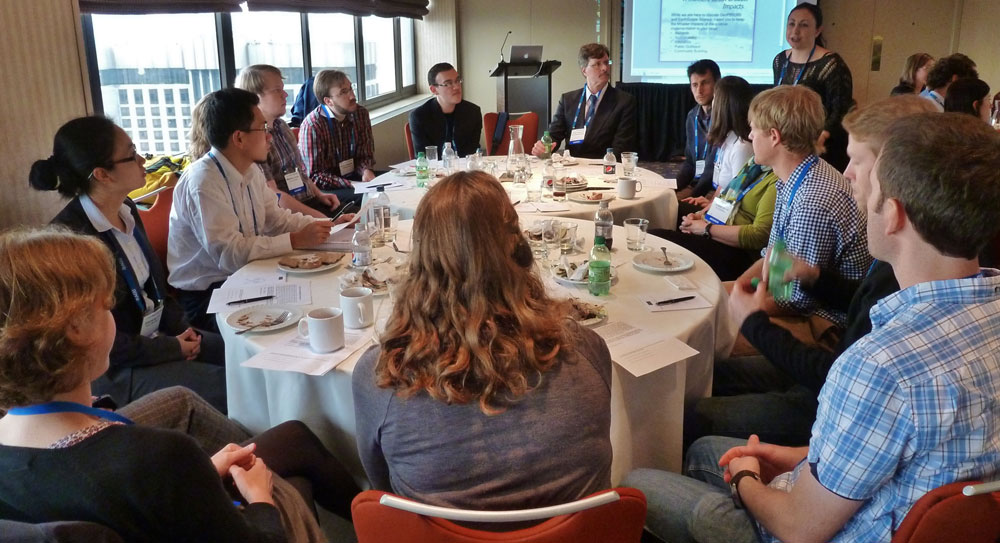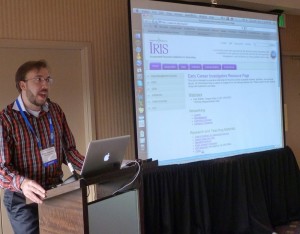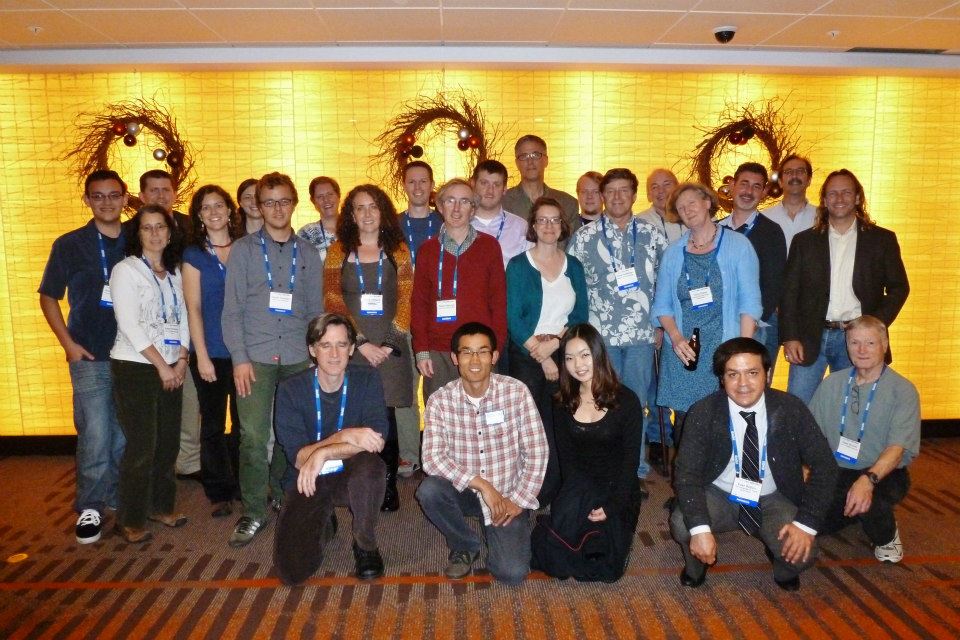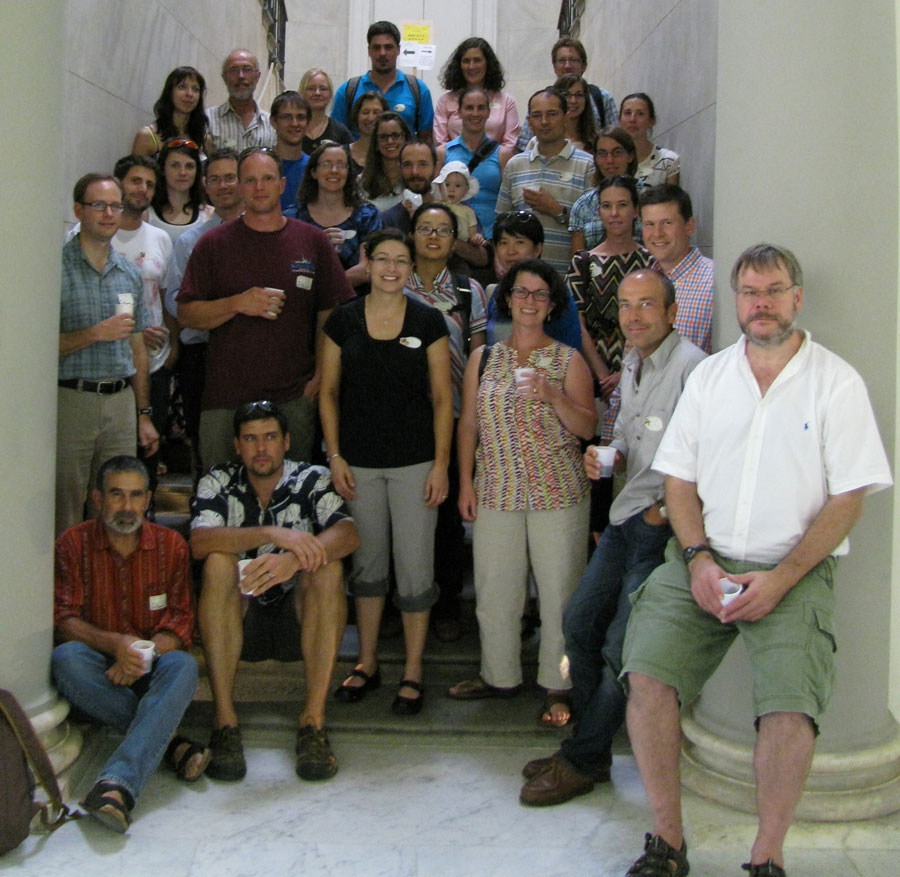Many thanks again to all of you for participating in and contributing to a most informative and inspiring planning workshop for future GeoPRISMS and related research in New Zealand. The discussions point toward a clear plan forward, with strong motivations for focused community-based investigations of several key regions in and around New Zealand.
Announcement
The GeoPRISMS Steering and Oversight Committee is pleased to announce a workshop to develop a detailed implementation plan for the NSF GeoPRISMS New Zealand Primary Site. New Zealand was chosen as a primary site because all of the GeoPRISMS Subduction Cycles and Deformation (SCD) themes can be addressed particularly well at the Hikurangi/Kermadec and Fiordland subduction zones. The SCD themes include arc magmatism and volatile cycling, subduction initiation, subduction margin deformation processes (both seismic-cycle and longer timescales), and links between surface processes and subduction margin tectonics. In addition to serving as an excellent natural laboratory for modern subduction processes, New Zealand also offers opportunities to investigate an exhumed Paleozoic to Mesozoic subduction system.
The workshop is intended to clarify the main research objectives for the New Zealand primary site, and to develop an implementation plan and timeline to achieve these objectives considering available resources and infrastructure. More details about GeoPRISMS science objectives, can be found here, along with the initial Implementation Plan for the New Zealand primary site, which will serve as a starting point for this workshop.
The program will include a number of overview presentations on New Zealand and related subduction margins, existing scientific infrastructure within New Zealand (such as GeoNet), potential for multinational partnerships on New Zealand-based research, and break-out discussions that will lead to conclusive decisions about science implementation at the New Zealand primary site. White papers will be solicited in advance of the workshop to ensure community input.
Researchers from all countries with an interest in New Zealand subduction zone science are welcome to apply. Post-docs, senior graduate students, and members of under-represented groups are especially encouraged to apply. Funding from GeoPRISMS/NSF and the New Zealand Ministry for Business, Innovation, and Employment (MBIE) is expected to cover a significant fraction of travel and accommodation costs for ~50 participants traveling from outside of New Zealand. We also expect to support participation from a similar number of New Zealand-based scientists. Applications require a brief statement of interest and anticipated contribution to the workshop and a short C.V.
Note: April 2013 will be a busy time for meetings and workshops (EGU, SSA, Chikyu+10), thus interested participants should plan their travel and meeting schedules accordingly. The Seismological Society of America meeting is planned for April 17-19 in Salt Lake City. If participants plan to attend both SSA and the GeoPRISMS NZ workshop, the time difference makes it possible to depart New Zealand the evening of April 17th, and arrive in Salt Lake City by mid-day on April 17th. There are also daily direct flights from Auckland, New Zealand to Tokyo, convenient for participants who plan to attend both the GeoPRISMS NZ meeting and the Chikyu+10 meeting in Tokyo (April 21-23).
Susan Ellis, GNS Science – New Zealand
Adam Kent, Oregon State University
Nicola Litchfield, GNS Science – New Zealand
Kathleen Marsaglia, California State University at Northridge
Jeff Marshall, California State University at Pomona
Demian Saffer, Pennsylvania State University
Susan Schwartz, University of California, Santa Cruz
Laura Wallace, University of Texas, Austin
Richard Wysoczanski, NIWA – National Institute of Water and Atmospheric Research – New Zealand
Student Symposium | Sunday, April 14
6:30-8:30 pm Icebreaker and registration* at Foxglove Restaurant, Wellington waterfront
*Note that participants can also register at Te Papa during the days of the workshop. The registration desk at Te Papa will be open from 8:00 AM on April 15, and will be located in front of the Soundings Theatre or in the reception area of the Telstra Centre.
Day 1 | Monday, April 15
Moderators: Laura Wallace and Susan Ellis
8:30-8:40 Welcome from the conveners and housekeeping issues
8:40-8:50 Welcome from Prue Williams (the NZ Ministry for Business, Innovation and Employment)
8:55-9:10 introduction to the aims of the workshop and the GeoPRISMS Program | 1Mb – Julia Morgan (GeoPRISMS Office)
Talks introducing New Zealand’s subduction zones and the primary topics in subduction margin evolution and behavior
9:10-9:45 Overview of Zealandia and its subduction record since the Paleozoic | 12Mb – Nick Mortimer (GNS Science)
TOPIC 1: What are the geological, geochemical, and geophysical responses to subduction initiation and early arc evolution and how do they affect subduction zone formation?
9:45-10:10 Causes and consequences of subduction initiation | 2Mb – Mike Gurnis (Caltech)
10:10-10:35 The expression of subduction initiation in New Zealand | 12Mb – Rupert Sutherland (GNS Science)
10:35 Morning Tea. Posters will be available for viewing during all morning and afternoon teas and lunches. There will also be an extended afternoon tea on Day 3 for more poster viewing
Moderators: Adam Kent and Richard Wysoczanski
TOPIC 2: What are the pathways and sources of magmas and volatiles emerging in the arc and forearc, and how do these processes interact with upper plate extension?
11:05-11:30 Volatile fluxes at subduction zones, the model perspective | 4Mb – Brad Hacker (University of California-Santa Barbara)
11:30-11:55 Volatile fluxes and arc magmatism: The observational record and unresolved questions | 1Mb – Paul Wallace (University of Oregon)
11:55-12:20 The Kermadec Arc system: our understanding about the present and past | 3Mb – Christian Timm (GNS Science)
12:20-12:45 Taupo Zone volcanism, extension and large silicic eruptions | 6Mb – Colin Wilson (Victoria University of Wellington)
12:45 Lunch
Moderators: Kathleen Marsaglia and Demian Saffer
TOPIC 3: What controls subduction thrust fault slip behaviour and its spatial variability?
1:40-2:05 Global perspective on controls on megathrust slip behavior | 4Mb – Satoshi Ide (University of Tokyo)
2:05-2:30 Overview of Hikurangi margin subduction tectonics and megathrust slip behavior | 5Mb – Laura Wallace (University of Texas, Institute for Geophysics)
TOPIC 4: Feedbacks between climate, sedimentation, and forearc deformation
2:30-2:55 Global overview of interaction among subduction margin sedimentation, climate, eustasy, and forearm deformation | 7Mb – Mike Underwood (University of Missouri)
2:55-3:20 The passage of sediment from mountain source to ocean sink: Results from the MARGINS S2S Waipaoa sedimentary system, Hikurangi Margin | 5Mb – Alan Orpin (NIWA)
3:20-3:45 Offshore Hikurangi Margin: tectonic deformation – sedimentation – climate interactions | 8Mb – Phil Barnes (NIWA)
3:45 Afternoon tea
4:15 First breakout sessions, based around the 4 main topics. The goal for these breakouts will be to identify the most exciting science that can be done in NZ to help address each main Topic
TOPIC 1: What are the geological, geochemical, and geophysical responses to subduction initiation and early arc evolution and how do they affect subduction zone formation?
Breakout leaders: Mark Reagan (University of Iowa), Tim Stern (Victoria Univ. Wellington)
Scribes: Justin Ball (Univ. Colorado), Katrina Jacobs (VUW, Wellington)
TOPIC 2: What are the pathways and sources of magmas and volatiles emerging in the arc and forearc, and how do these processes interact with upper plate extension?
Breakout leaders: Ian Smith (University of Auckland), Kaj Hoernle (GEOMAR)
Scribes: Madison Myers (Univ. of Oregon), Melissa Rotella (VUW, Wellington)
TOPIC 3: What controls subduction thrust fault slip behaviour and its spatial variability?
Breakout leaders: Bill Fry (GNS Science), Kelin Wang (Canadian Geological Survey, PGC)
Scribes: Noel Bartlow (Stanford University), Dan Bassett (Oxford University)
TOPIC 4: Feedbacks between climate, sedimentation, and forearc deformation
Breakout leaders: Clark Alexander (Skidaway Inst. Oc.), Ingo Pecher (Univ. of Auckland)
Scribes: Corina Cerovski-Darriau (Univ. of Oregon), David Oakley (Penn State)
5:10 Switch up breakout sessions (people migrate to a different breakout session)
6:00 End of Day 1
Day 2 | Tuesday, April 16
Moderators: Susan Schwartz and Jim Gill
8:30 Introduction to Day 2
8:40 Report from Day 1 breakout leaders, plenary discussion on outcomes of breakouts
10:00 Morning Tea
Moderators: Nicola Litchfield and John Townend
Series of talks on existing scientific infrastructure and current initiatives in NZ subduction science, including emerging IODP projects
10:30-10:50 New Zealand GeoNet: Impacts on geological hazards monitoring and research in New Zealand | 2Mb – Ken Gledhill (GeoNet)
10:50-11:05 The NZ active faults data base and onshore active faulting studies at New Zealand’s subduction zones | 3Mb – Nicola Litchfield (GNS Science)
11:05-11:20 The SAHKE Project: Imaging the subduction plate boundary beneath Wellington | 2Mb – Stuart Henrys (GNS Science)
11:20-11:35 New Zealand marine geological and geophysical research capabilities and databases | 2Mb – Geoffroy Lamarche (NIWA)
11:35-12:00 Overview of current knowledge and initiatives on the Kermadec arc volcanoes, including emerging IODP opportunities there | Cornel De Ronde (GNS Science)
12:00-12:15 Using IODP drilling to unlock the secrets of slow slip events, the Hikurangi subduction margin | 1Mb – Demian Saffer (Penn State)
12:15-12:30 Proposed IODP drilling at the Lord Howe Rise to understand subduction initiation at the Tonga/Kermadec Trench | 3Mb – Rupert Sutherland (GNS Science)
12:30 Lunch
Moderators: Susan Ellis and Jeff Marshall
Series of talks on the role of subduction science in understanding seismic, tsunami, and volcanic hazards and risk in New Zealand
1:20-1:35 It’s Our Fault: A project to understand earthquake risk posed to the Wellington region | 5Mb – Russ Van Dissen (GNS Science)
1:35-1:50 Developing an effective community response to the next Great East Coast Subduction Zone Earthquake and Tsunami | 2Mb – David Johnston (GNS Science, Massey University)
1:50-2:05 The integrated role of research and monitoring in the assessment of volcanic hazards and risk in New Zealand | 1Mb – Gill Jolly (GNS Science)
2:05-3:30 A series of short topical talks (~10 mins each + 2 minutes for questions/discussion).
Variable mantle and subduction components in the sources of Havre Trough back arc lavas | 22Mb – Erin Todd (USGS)
Tomographic imaging of the mantle wedge beneath the North Island and relationship to volcanic arc processes | 1Mb – Martin Reyners (GNS Science)
Magnetotelluric imaging studies of the Hikurangi margin–from arc to forear | 2Mb – Wiebke Heise (GNS Science)
Fluids as sentinels of deep crustal changes and history in the Hikurangi forear | Agnes Reyes (GNS Science)
Seismological studies of slow slip in New Zealand | 1Mb – Bill Fry (GNS Science)
Episodic tremor and slip at the Japan Trench before the 2011 Tohoku earthquake: Implications for understanding shallow megathrust processes at the NZ focus site | 2Mb – Yoshihiro Ito (Tohoku University)
Heat flow along the Hikurangi margin | 2Mb – Rob Harris (Oregon State University)
3:30 Afternoon Tea
4:00 Breakout sessions based on the four main geographic regions of NZ subduction: (1) Hikurangi Margin, (2) Fiordland, (3) Kermadec Arc/Havre Trough (+Colville Ridge, South Fiji Basin, across to Lord Howe Rise), and (4) Taupo Volcanic Zone. These breakouts are intended to develop and discuss the main science priorities in each of these geographic areas, and identify data needed to do the science. Synergies that exist across the four Topics (from Day 1) in each of these locations will also be discussed. Note, the conveners may change the organization and aims of Day 2 breakout sessions depending on the interests emerging from the Day 1 breakouts.
Location 1: Hikurangi Margin
Breakout leaders: Rob Harris (Oregon State University) and Stuart Henrys (GNS Science)
Scribes: Rachel Lauer (Penn. State), Jiao Ruohong (VUW, Wellington)
Location 2: Fiordland
Breakout leaders: Andy Tulloch (GNS Science) and Tracy Rushmer (Macquarie University)
Scribes: Besim Dragovic (Boston University), Samir Naif (UCSD-Scripps)
Location 3: Kermadec Arc/Havre Trough/South Fiji Basin/Lord Howe Rise
Breakout leaders: Fernando Martinez (Univ. Hawaii), Simon Turner (Macquarie University)
Scribes: Sophie Barton (NIWA/VUW), Erin Todd (USGS)
Location 4: Taupo Volcanic Zone
Breakout Leaders: Pilar Villamor (GNS Science), Kari Cooper (Univ. California-Davis)
Scribes: James Muirhead (Univ. of Idaho), Hannu Seebeck (VUW, Wellington)
5:00 Switch up breakout groups
6:00 End of Day 2
7:00 Conference dinner: Dockside Restaurant, Wellington waterfront
Day 3 | Wednesday, April 17
Moderators: Adam Kent and Rupert Sutherland
8:30 Introduction to Day 3
8:40 Report from Day 2 breakout leaders, plenary discussion on breakout outcomes
10:15 Morning Tea
Moderators: Nicola Litchfield and Clifford Thurber
Series of talks from international partners on scientific infrastructure (e.g., marine vessels, equipment) and potential funding resources for international collaborators to conduct subduction studies in New Zealand
10:45-11:05 Review of NSF programs, infrastructure for subduction studies | Bilal Haq (NSF)
11:05-11:20 Japanese perspective | 4Mb – Shuichi Kodaira (JAMSTEC)
11:20-11:35 German perspective | 3Mb – Achim Kopf (Univ. Bremen)
11:50-12:05 UK perspective | 1Mb – Lisa McNeill (Univ. of Southhampton)
11:35-11:50 Canadian perspective | 2Mb – Kelin Wang (Canadian Geological Survey, PGC)
12:05 Lunch
12:45 Breakouts by each of the scientific topics (from Day 1) to develop an implementation plan for collaborative, multinational subduction science in NZ for the next ten years. This breakout is intended to define the research that is best-suited for GeoPRISMS goals and resources, but is also intended to define a path forward for future NZ-led initiatives and those that international partners would like to contribute to and/or lead. Conveners may decide to modify the focus/organization of the breakouts depending on the outcomes from the previous days’ breakout discussions.
TOPIC 1: What are the geological, geochemical, and geophysical responses to subduction initiation and early arc evolution and how do they affect subduction zone formation?
Breakout leaders: Mike Gurnis (Caltech) and Jim Gill (Univ. California-Santa Cruz)
Scribes: Rob Holt (VUW, Wellington) and Sapthala Karalliyada (VUW, Wellington)
TOPIC 2: What are the pathways and sources of magmas and volatiles emerging in the arc and forearc, and how do these processes interact with upper plate extension?
Breakout leaders: David Hilton (UCSC-Scripps) and Ken Rubin (Univ. Hawaii)
Scribes: Simon Barker (VUW, Wellington) and Adrian Shelley (VUW, Wellington)
TOPIC 3: What controls subduction thrust fault slip behaviour and its spatial variability?
Breakout leaders: Harold Tobin (Univ. Wisconsin) and Harmony Colella (Miami Univ. Ohio)
Scribes: Pegah Faegh Lashgary (VUW, Wellington) and Erin Todd (Univ. Calif.-Santa Cruz)
TOPIC 4: Feedbacks between climate, sedimentation, and forearc deformation
Breakout leaders: Mike Underwood (Univ. Missouri) and Alan Orpin (NIWA)
Scribes: Calum Chamberlain (VUW, Wellington) and Laurel Childress (Northwestern Univ.)
1:45 Break for afternoon tea and extended poster session
2:45 Switch up breakout groups
Moderators: Demian Saffer, Laura Wallace, and Richard Wysoczanski
3:45 Reconvene for final decisions on implementation plan for NZ focus site
3:50 The student symposium participants will present their integrated perspective on the priorities and path forward
4:05 Implementation plan breakout summaries (~10-15 minutes for each breakout)
5:00 Plenary discussion of the overall implementation plan. Participants may be asked to decide/vote on the most suitable priorities for the GeoPRISMS implementation plan.
6:00 Wrap up and closure of meeting
Sunday, April 14, 2013
8:00 AM Welcome and Symposium Objectives | 200Kb – Jeff Marshall (CSU Pomona)
8:10 AM Introduction to GeoPRISMS | 12Mb – Juli Morgan (Rice University, GeoPRISMS Chair)
8:30 AM The tectonic setting of New Zealand | 9Mb – Susan Ellis (GNS Science)
9:00 AM Subduction megathrust processes in New Zealand | 9Mb – Laura Wallace (University of Texas, Austin)
9:30 AM Arc volcanism in New Zealand | 19Mb – Graham Leonard (GNS Science)
10:00 AM New Zealand sedimentation & tectonics | 14Mb – Kathie Marsaglia (CSU Northridge)
10:30 AM Coffee Break
11:00 AM Student Poster Session with 2-3 min presentations at each poster
12:30 PM Pick-up Lunch, Get on bus for Field Trip
12:30-6:00 Wellington Fault Geologic Field Trip led by Nicola Litchfield (GNS Science) and Tim Little (Victoria University of Wellington)
The fieldtrip is intended to view the Wellington fault, a major active, right lateral strike slip fault that runs through downtown Wellington and continues northward along the length of the North Island. We will have fieldtrip stops to view the fault in Wellington, and will finish up at a prime location to see the Wellington fault in Upper Hutt. We will also discuss the effects that an 1855 Magnitude 8.2 rupture of another nearby strike-slip fault (the Wairarapa fault) had on the Wellington region.
6:30 PM Workshop Registration, Ice Breaker at Foxglove Restaurant
The follow-up Student Career Dinner will be held in Wellington Monday, April 15, 7pm at Osteria del Toro restaurant.
Download the compiled white papers
Why do some subduction zones have M9 earthquakes and others less than M7.5? Composition and state variations on the subduction thrust | 400Kb – Roy Hyndman
Mission Immiscible or supercritical fluid? | 400Kb – Yoshihiko Tamura et al.
Heat Flow along the Hikurangi Margin | 1Mb – Robert Harris et al.
Fluid Redistribution Coupled to Deformation Around the NZ Plate Boundary | 400Kb – Richard Sibson et al.
GeoPRISMS Science Goals in the Havre Trough Back-Arc Basin | 500Kb – Fernando Martinez and Robert Dunn
Developing an effective community response to the next “Great East Coast Subduction Zone Earthquake and Tsunami” | 500Kb – David Johnston et al.
What should we look for at Hikurangi in light of our findings in the Japan Trench? | 100Kb – Virginia Toy et al.
The active margin carbon cycle | 200Kb – Laurel Childress and Neal Blair
Unlocking the Secrets of Slow Slip by Scientific Drilling at the Northern Hikurangi Subduction Margin, New Zealand | 300Kb – Laura Wallace et al.
Seafloor instability processes and products on the active Hikurangi margin | 300Kb – Joshu Mountjoy et al.
Geochemical Fluxes through the New Zealand Arc System | 300Kb – Stuart Simmons et al.
Seafloor and Subseafloor Monitoring of Slow Slip at the Northern Hikurangi Margin | 400Kb – Laura Wallace et al.
Resolving Fundamental Questions of Subduction Initiation in New Zealand | 2Mb – Mike Gurnis et al.
Testing induced vs spontaneous subduction initiation mechanisms in the SW Pacific | 200Kb – Nick Mortimer et al.
Imaging the Southern Hikurangi Margin locked subduction interface and upper plate by passive and active seismic and magnetotelluric arrays | 700Kb – Stuart Henrys et al.
GeoPRISMS Data Portal: New Zealand Primary Site | 2Mb – Andrew Goodwillie
Cambrian Rocks of the Takaka Terrane, the Foundation of Zealandia: A Complex Record of Subduction Initiation and Arc Development Exposed in the Nelson Area of the South Island | 300Kb – Kate Pound et al.
Constrains on the thermal history of crystal-rich magmas from crystal residence timescales | 200Kb – Adam Kent and Kari Cooper
Brothers submarine arc volcano: gateway to the sub-arc mantle | 200Kb – Cornel de Ronde et al.
Louisville seamount subduction: tracking mantle flow beneath the central Tonga-Kermadec arc | 700Kb – Christian Timm et al.
Characterization of structure and properties of the northern Hikurangi Margin using OBS seismology for studies of slow slip and along-strike variations in plate interface coupling | 400Kb – OBS working group
Subduction inputs of the Hikurangi Margin, New Zealand | 200Kb – Michael Underwood et al.
How do subduction zones end? | 300Kb – Simon Lamb et al.
Proposal to study subduction initiation in northern Zealandia | 200Kb – Tim Stern and Rupert Sutherland
Linking fluid chemistry to mechanics and geophysical structure along the Hikurangi Margin | 300Kb – Susan Ellis et al.
Constraining melt transport, storage and chemical modification in monogenetic vents: focus on the Auckland Volcanic Field | 700Kb – John C. Lassiter et al.
Look before it leaps: the interplay of magmatism, tectonism and basement structural inheritance in a migrating rifting arc | 500Kb – Julie Rowland et al.
Integrating current research on subduction processes and records into learning and teaching: potential for GeoPRISMS knowledge transfer | 100Kb – Kate Pound et al.
Paleoseismology at the Hikurangi Margin | 200Kb – Jessica Pilarczyk et al.
Three-dimensional seismic imaging of slow slip zones along the northern Hikurangi Margin | 200Kb – Nathan Bangs et al.
Determining slip behavior in the near-trough region of the Hikurangi subduction zone with GPS-Acoustic seafloor geodesy | 300Kb – Kelin Wang et al.
Variations in remote triggering susceptibility along the Hikurangi margin and implications for the time-dependent strength of subduction zones | 300Kb – Nicholas J van der Elst et al.
Lateral Migration of Subduction Systems: Progression of the Hikurangi Margin Southwestward Through Increased Plate Coupling to Continuum Compression | 400Kb – Philip E. Wannamaker et al.
Geospatial variation in magmatic and volatile fluxes to the oceans and atmosphere from active subaerial/submarine volcanism in the New Zealand Primary Site | 400Kb – Ken Rubin et al.
Havre Trough and the “Rifting Phase” of Back-arc Basin Evolution | 10Mb – Erin Todd et al.
Gas Hydrates in New Zealand | 200Kb – Ingo A. Pecher et al.
Exterra: Understanding Convergent Margin Processes Through Studies of Exhumed Terranes – GeoPRISMS New Zealand Focus Site | 300Kb – Besim Dragovic et al.
Interaction of subduction and rifting on the exhumed Cretaceous convergent margin arc of Zealandia | 200Kb – Andy Tulloch et al.
Call for White Papers
Scientists interested in participating in the development of the integrated science and implementation plan for New Zealand are invited to submit White Papers in advance of the workshop. The White Papers will play an important role in the workshop outcomes and design, including guiding breakout discussions and speakers at the workshop, and they are thus an important mechanism for community input.
White Papers should propose specific science objectives, show suitability for addressing the research themes outlined in the GeoPRISMS Science Plans, and consider the relative merits of PI-driven versus “community” approaches to collecting necessary data sets. Example White Paper topics could include specific scientific questions and/or targets in New Zealand, possible community experiments (including joint international proposals), and implementation strategies for carrying out thematic studies. White Paper authors should consult relevant parts of the GeoPRISMS Science Plan & Draft Implementation Plan
White papers should be submitted to the GeoPRISMS Office by March 15, 2013. All White Papers will be made available to meeting participants and the community prior to the workshop, and will be used in the implementation strategy decision-making process during the workshop.
Guidelines
MS Word Doc template – Please use this template for your white paper submission
White Papers submitted by proponent teams are preferred to ensure broader consensus, although individuals are also welcome to submit.
Graduate students and post-doctoral fellows are encouraged to participate in the process of assembling a white paper; similarly, PIs are encouraged to include students, post-docs, and young investigators in author teams.
Authors can contribute more than one white paper.
White Papers should be clear and succinct and are limited to 2 pages of text plus 1 page of figures and references.
White Papers can be submitted even if the authors are unable to attend the meeting.
White Papers that address the integration or complementarity of GeoPRISMS with ongoing international projects are particularly encouraged.
The conveners reserve the right to restrict dissemination of papers deemed to be too narrow in scope or not aimed at goals of integrating resources of the relevant programs.
White Paper Title
Authors and Affiliations
Contact information
Proposed sites and/or themes addressed
Key types of existing or forthcoming data/infrastructure to build upon
NZ Field Guides
This is a non-exhaustive list of relevant fieldtrips located in the North Island.
Information provided by Nicola Litchfield from previous fieldtrips
White Island Tour: Products and Processes of Recent Activity
The Geology of Mayor Island (Tuhua): a Brief Introduction
Coastal Hazards of the Bay of Plenty
An introduction to Sunny Matata and its great 18 May 2005 Debris Flows
Earthquakes and Eruptions at Okataina Volcanic Centre
Waipaoa Sedimentary Field Trip, Gisborne
Overview of Hikurangi Margin Slow Slip Event, Gisborne (2-days field trip)
Wellington Fault: Neotectonics and Earthquake Geology of the Wellington-Hutt Valley Segment
Hikurangi Margin Subduction Thrust Fieldtrip: Late Quaternary Upper Plate Deformation in the Southern Wairarapa Valley and Palliser Bay
An implementation planning workshop was held for the New Zealand Primary Site in Wellington, New Zealand on 14-16 April, at Te Papa Museum. There were 170 participants from ten different countries, demonstrating the excellent opportunities for international collaboration at this primary site. The large number of participants and high-quality white papers submitted (38 white papers–more than for any of the other GeoPRISMS primary site workshops) reflected the high level of enthusiasm among both the US and international subduction zone community for future studies in New Zealand. The workshop consisted of a number of keynote and invited talks, and break-out sessions to discuss and prioritize the main scientific objectives and most suitable GeoPRISMS goals.
The major SCD topics addressed at the meeting included:
(1) What are the geological, geochemical and geophysical responses to subduction initiation and early arc evolution and how do they affect subduction zone formation?
(2) What are the pathways and sources of magmas and volatiles emerging in the arc and forearc, and how do these processes interact with upper plate extension?
(3) What controls subduction thrust fault slip behaviour and its spatial variability?
(4) What are the feedbacks between climate, sedimentation, and forearc deformation?
Workshop objectives were to refine these questions with reference to scientific opportunities in New Zealand, and to specify focus areas and implementation approaches to address them, to guide future research within GeoPRISMS and beyond.
Four geographic regions emerged as focus areas where several of these topics could be well addressed:
(1) The Puysegur Trench is arguably the best-expressed example on Earth of a subduction zone being “caught in the act” of initiating, providing a unique opportunity to define the geodynamic boundary conditions to test models for subduction intiation. Key questions include: How does the new slab first enter the mantle? What is the fluid expression and thermal structure of subduction initiation? Focused geophysical surveys can tackle fundamental questions about the onset of convergence and associated vertical motions, offshore thermal and crustal structure, newly developing arc volcanism, as well as the geometry of subduction initiation. These new datasets will be underpinned by the uniquely well-constrained plate kinematic history during subduction development, a complete Miocene rock uplift history onshore Fiordland, among others.
(2) The Hikurangi Subduction Margin offers an outstanding opportunity to address the controls on variability in megathrust slip behaviour, due to strong along-strike variations in interseismic coupling and slow slip event behavior observed there. Participants also recognized the outstanding opportunities to assess feedbacks between climate, sedimentation and forearc deformation, which can build upon previous MARGINS S2S studies in the Waipaoa catchment. Other questions to be addressed at Hikurangi include: How do topography, thermal structure, and material properties of incoming plate control fault zone structure, slip behavior, accretionary wedge evolution, and uplift and erosion of the forearc? What are the pathways and timescales of sediment input? What is the slip behavior and rheology of the near-trench portion of subduction fault? Discussions for future work emphasized integrated geophysical, geological, and geochemical studies of the onshore and offshore forearc and incoming plate to discern the major controls on variations in subduction interface behaviour and overall margin evolution. Moreover, a series of IODP proposals are currently in the system to investigate the mechanisms behind shallow slow slip event occurrence at North Hikurangi, and these provided an important focal point for discussions on future studies. Future studies at Hikurangi will leverage on existing datasets and scientific infrastructure such as a comprehensive geodetic and seismic network (www.geonet.org.nz), as well as significant ongoing and planned efforts by international partners in NZ, Japan, and Germany.
(3) The Taupo Volcanic Zone elicited significant excitement as the most productive rhyolitic system on Earth, which also coincides with an extensional fault system. Some of the major questions to be addressed there include: How does the mafic flux from the mantle translate to voluminous rhyolitic magma production? How does arc volcanism interact with upper plate extension? World-class datasets bearing on the distributions, age, geochemistry, physical volcanology and petrology of many rocks from the Taupo and adjacent arc volcanoes have already been acquired by New Zealand-based researchers. As a result substantial scope exists to supplement and synthesise these data and combine them with integrative geophysical and geochemical investigations. Moreover, comparison of the Kermadec Arc corridors with outcomes from the TVZ affords an opportunity to assess the influence of the continental/oceanic crust transition in the overlying plate on arc development, as well as changes in the nature of the subducting plate. An opportunity to link with the Hikurangi margin group also exists, and a targeted geochemical, geophysical, and geological corridor would enable assessment of controls on magmatism and volatile cycling for the entire subduction system, from the incoming plate and forearc through to the arc.
(4) The Kermadec Arc offers a prime setting for addressing questions relating to magmatic and volatile fluxes at a well-developed volcanic arc from the forearc through to the backarc. The Havre-Lau backarc system, which progresses from oceanic spreading in the north to rifting and disorganised spreading in the south, also offers insights into backarc extension dynamics and the reorientation of arc systems. The effect of Hikurangi Plateau subduction on the magmatic products of the arc is also a topic of interest, requiring some along-strike comparisons. Moreover, it was also recognized that an outstanding record of Eocene subduction initiation at the Tonga-Kermadec-Hikurangi Trenches exists in the region west of the Kermadec Trench. The Kermadec Arc working group recognized that a key initial part of the project will be to identify corridors across the arc in which to target their field programs. Targeted field programs would include shipboard geophysics (passive and active seismic, electromagnetic, among others), rock sampling for geochemistry, petrology, and chronology, and hydrothermal fluid sampling.
Results from an upcoming GeoMar/Sonne cruise in the Kermadec Arc will provide results to help define which corridor(s) to focus on. The marine-based science plan developed by the Kermadecs group would complement ongoing and planned efforts by New Zealand, Japanese and German colleagues, and these international collaborations will amplify outcomes of GeoPRISMS goals in the Kermadec Arc.
In addition to these geographically-focused efforts, there was strong support for continuing studies of Exhumed Terranes in New Zealand, which provide unique exposures of Mesozoic subduction in the Fiordland and Otago regions of the South Island, as well as parts of the eastern North Island. It was recognized that the only pristine Cretaceous arc section in the Circum-Pacific exists in Fiordland in the South Island, offering a prime locale to investigate the root zones of an ancient arc, at outcrop scale.
New Zealand offers major opportunities to leverage international collaborations, including those within the New Zealand-based geoscience community, and major ongoing and planned efforts by Japanese and European collaborators, among others. Although the science priorities identified are many and varied, we expect that most of these can be realistically accomplished due to the additional resources of the broader, international community that can be brought to bear on these topics.
We would like to thank the meeting attendees for their enthusiastic participation, which made the workshop a great success. We would also like to thank the speakers for stimulating and informative talks, and the breakout leaders for their key role in steering discussions. The white paper authors made major contributions by sharing their ideas for future work, which will also provide an important resource for development of the implementation plan in the coming months. The conveners were impressed by the enthusiastic participation of the graduate students and post-docs. On the final day, the students presented a well-organized implementation plan for the New Zealand focus site, which will help guide the final implementation plan. Finally, a successful workshop would not have been possible without financial support from NSF/GeoPRISMS, the New Zealand Ministry for Business, Innovation and Employment, the Consortium for Ocean Leadership, GNS Science, and the New Zealand Earthquake Commission.
A number of important tasks lie ahead. The conveners and breakout leaders will develop a draft implementation plan for the New Zealand Primary Site to be available for comment and input from participants by the end of June. At the end of July, the conveners will integrate the community input into the plan, and will release the final implementation plan by late summer. This comprehensive implementation plan will serve as a guide for NSF proposals submitted to next year’s NSF GeoPRISMS solicitation in July 2014. We also hope that the implementation plan will help to guide future international collaborative work at the New Zealand focus site.
Workshop Conveners (in alphabetical order):
Susan Ellis, GNS Science – New Zealand
Adam Kent, Oregon State University
Nicola Litchfield, GNS Science – New Zealand
Kathleen Marsaglia, California State University at Northridge
Jeff Marshall, Cal Poly Pomona
Demian Saffer, Pennsylvania State University
Susan Schwartz, University of California, Santa Cruz
Laura Wallace, University of Texas, Austin
Richard Wysoczanski, NIWA – New Zealand

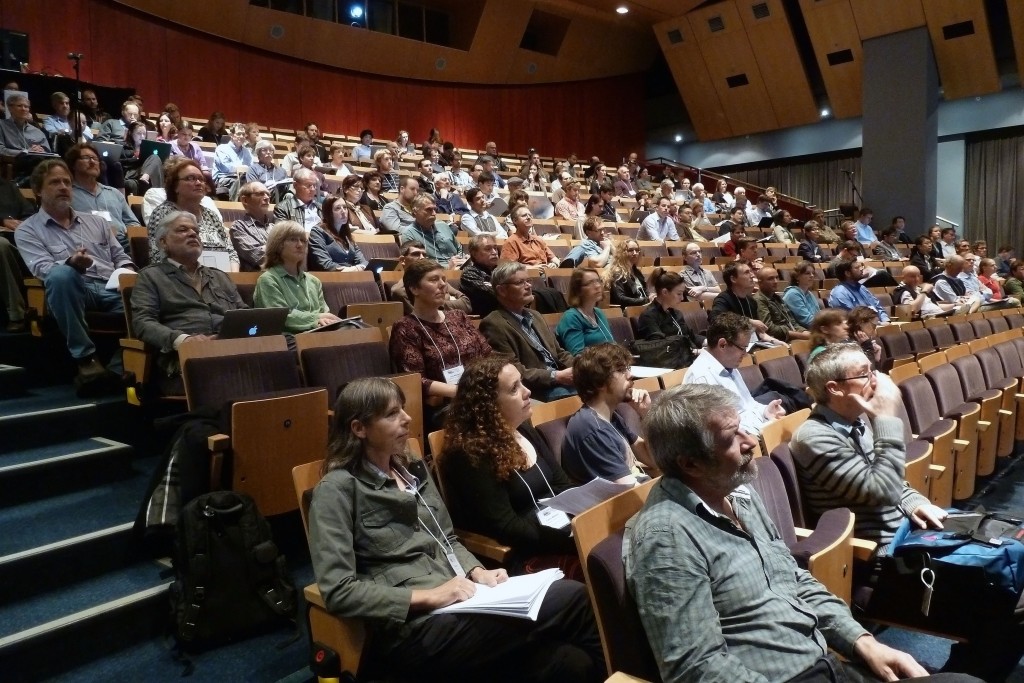
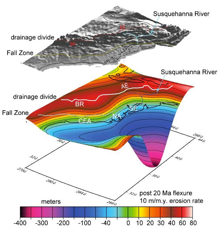 Description
Description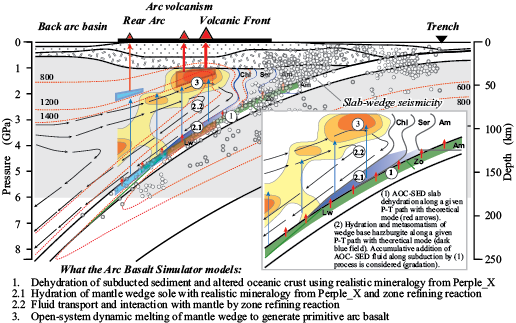 This short course is intended to help students, faculty, and researchers develop skills for mining data from EarthChem about the composition of arc lavas, visualize the location and important physical parameters of these volcanoes on GeoMapApp, and explore the petrogenesis of primitive lavas with a new Excel spreadsheet-based petrogenetic program “ABS 3” (Kimura et al., 2010). The course will comprise a variety of exercises and short lectures to explore and explain how these 3 software tools work together to address problems in convergent margin magma genesis. The course integrates use of geochemical databases, data visualization tools, and data analysis software with background knowledge about geoinformatics, relational databases, and data reporting. We will distribute ABS 3 spreadsheets and tutorials to participants before the workshop.
This short course is intended to help students, faculty, and researchers develop skills for mining data from EarthChem about the composition of arc lavas, visualize the location and important physical parameters of these volcanoes on GeoMapApp, and explore the petrogenesis of primitive lavas with a new Excel spreadsheet-based petrogenetic program “ABS 3” (Kimura et al., 2010). The course will comprise a variety of exercises and short lectures to explore and explain how these 3 software tools work together to address problems in convergent margin magma genesis. The course integrates use of geochemical databases, data visualization tools, and data analysis software with background knowledge about geoinformatics, relational databases, and data reporting. We will distribute ABS 3 spreadsheets and tutorials to participants before the workshop.